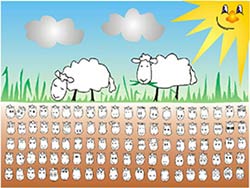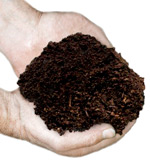Sustainable Gardening
Basics for Starting an Edible Garden
A good way is to start small and increase your garden areas as you increase your expertise. Of course, this may not be the way for all, but it has worked out well for many gardeners in Sacramento.
Study the sun patterns
Investigate what areas of your yard get the most sun, or morning sun, mid-day sun, hot afternoon sun, dappled sun most of the day, light shade, or deep shade. You will want to check this out for each season.
NOTE: The sun rotates high in the sky from the east to the west during the summer. (this bakes direct west facing garden beds.) During the winter the sun is lower in the southern sky and of course not as intense.
Match plants to available light
Decide the types of plants you want to start growing and choose an area (your future garden bed) that would provide the type of light these types of plants need. Sacramento has such intense sun, even plants that are said to need full sun usually want some light shade part of the day during the summer months. Many vegetables need up to 6 hours of sun, but like some filtered sun during the hotter times of the year. Even tomatoes do not grow as well with Sacramento's hot sun beating all afternoon on them. Their native environment was under a high tree canopy.
Measure out your planting area
After you choose the area (or areas) you want to plant, figure an 18" path or space (or larger) around it used for working this new garden bed. It is best not to walk in/on garden beds, as it is detrimental to the soil microbiology.
Many people build raised beds from redwood boards or some other landscape material. There are many sustainable materials on the market now. Building your bed up higher than exising grade allows for sheet mulching if it is a weedy area. Whatever type of bed you make, it is best not to build it wider (width) than 4 feet so you can reach into the center easily to plant, prune, harvest and weed. If you build against a fence, then 21/2 or not more 3 feet should be the distance from the fence.
* See pdf. Build a Raised Bed Garden
Whether you plan on starting small or taking out the whole lawn, it’s a good idea to have a plan. You might want to consult or hire a professional designer who specializes in drought tolerant, meadow landscapes or edible landscapes to help get a plan started. There are also many good books on the subject. If you do decide to do away with the grass, it’s better to start small and work in phases so you can get a feel for the plant growth, irrigation, and maintence needs for your new garden/landscape in your individual ecosystem. You may want to start by planting some of your favorite cooking herbs or by replacing some annual flowers with perennials, or native grasses with low water needs. You may also want to mix in some some colorful leafy greens such as Swiss chard, lettuce or kale in a bed requiring more medium water needs. Planning and planting a garden can be a truly creative experience engaging your ideas and inspiration, or if created by others, it can a joyful place to learn more about gardening and nature.

